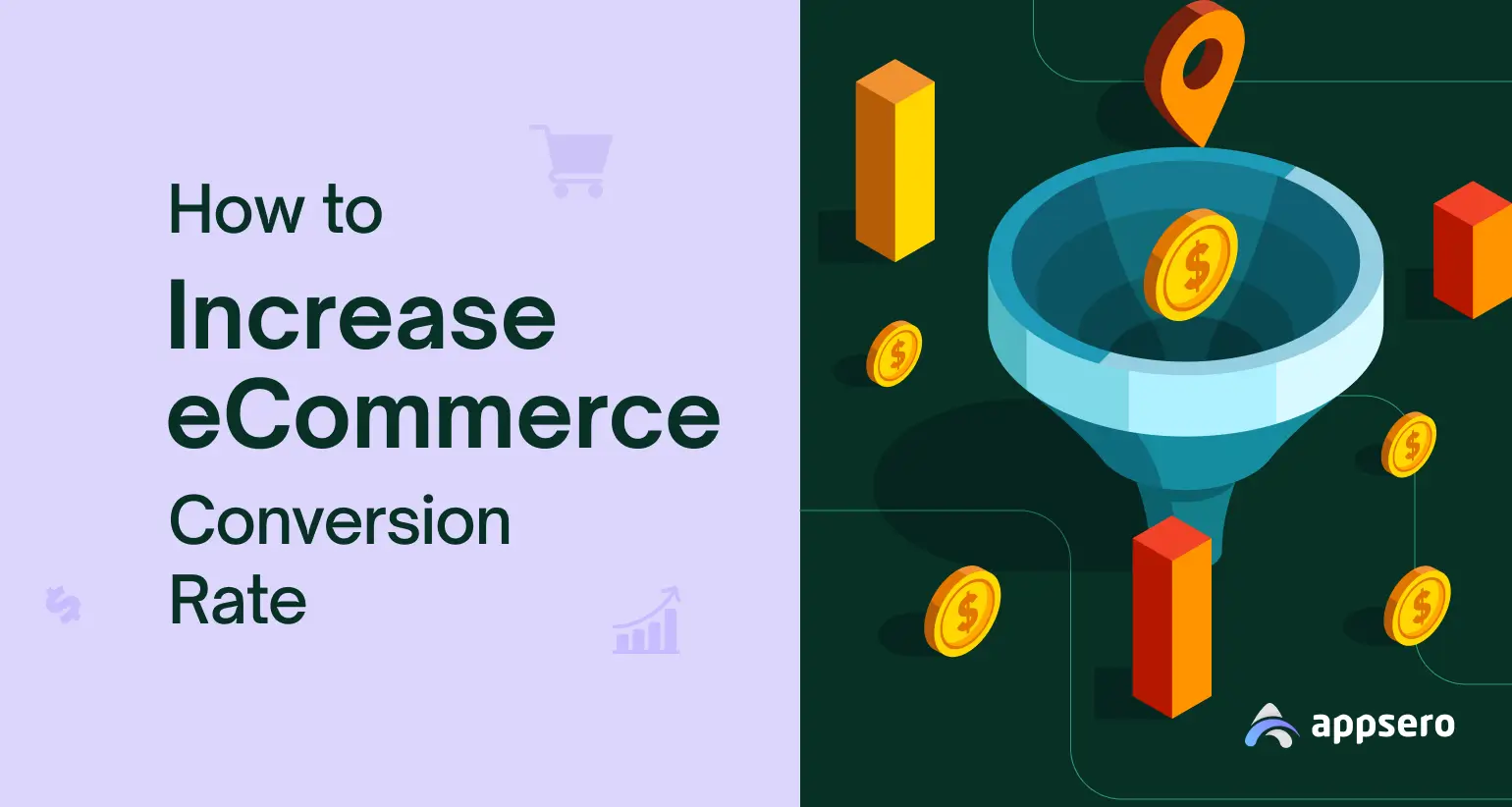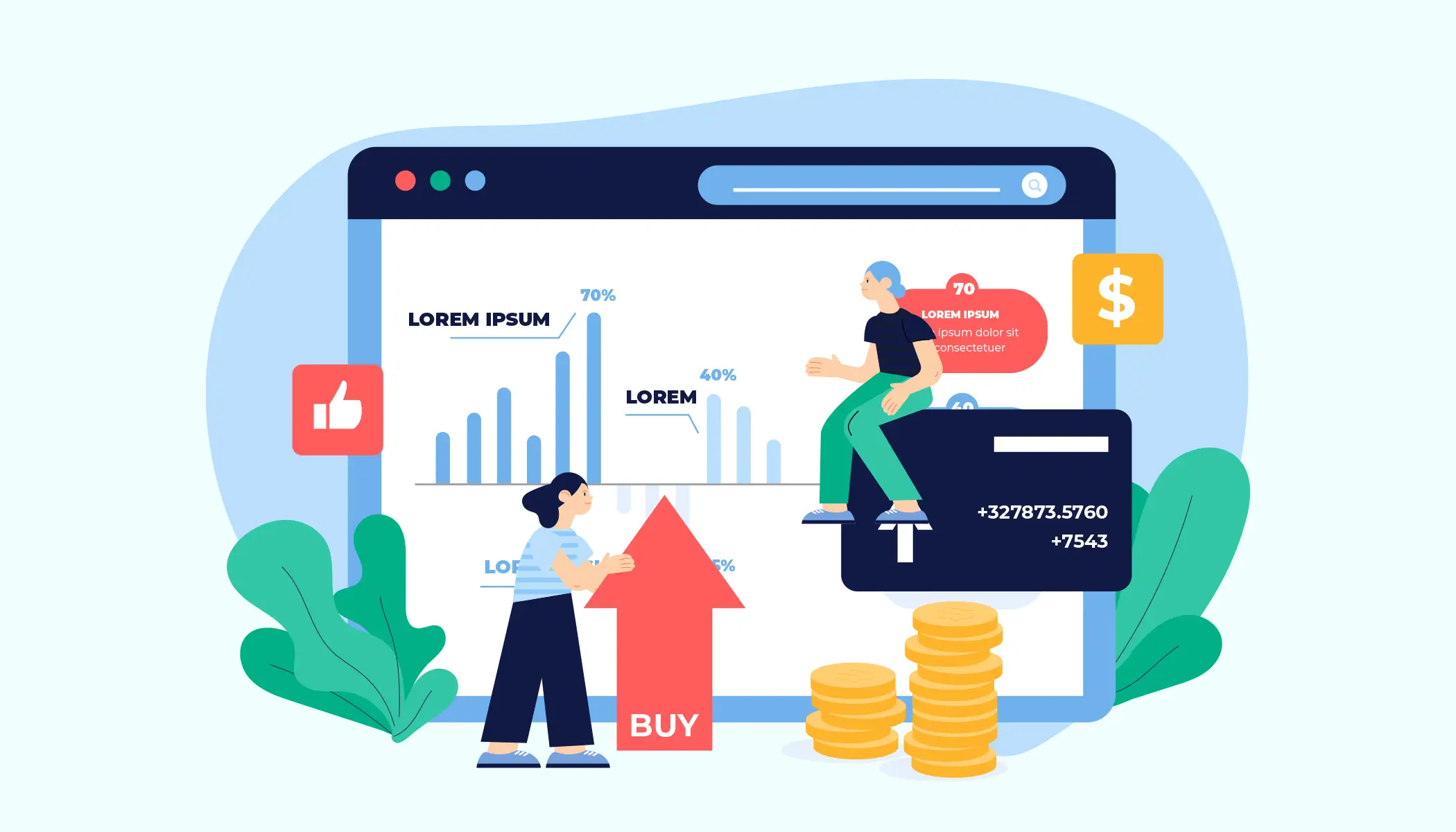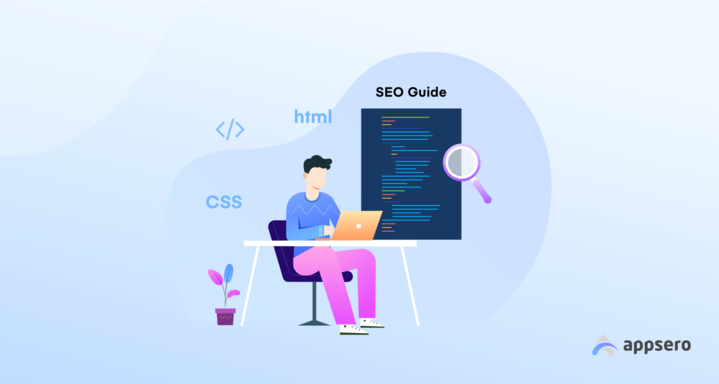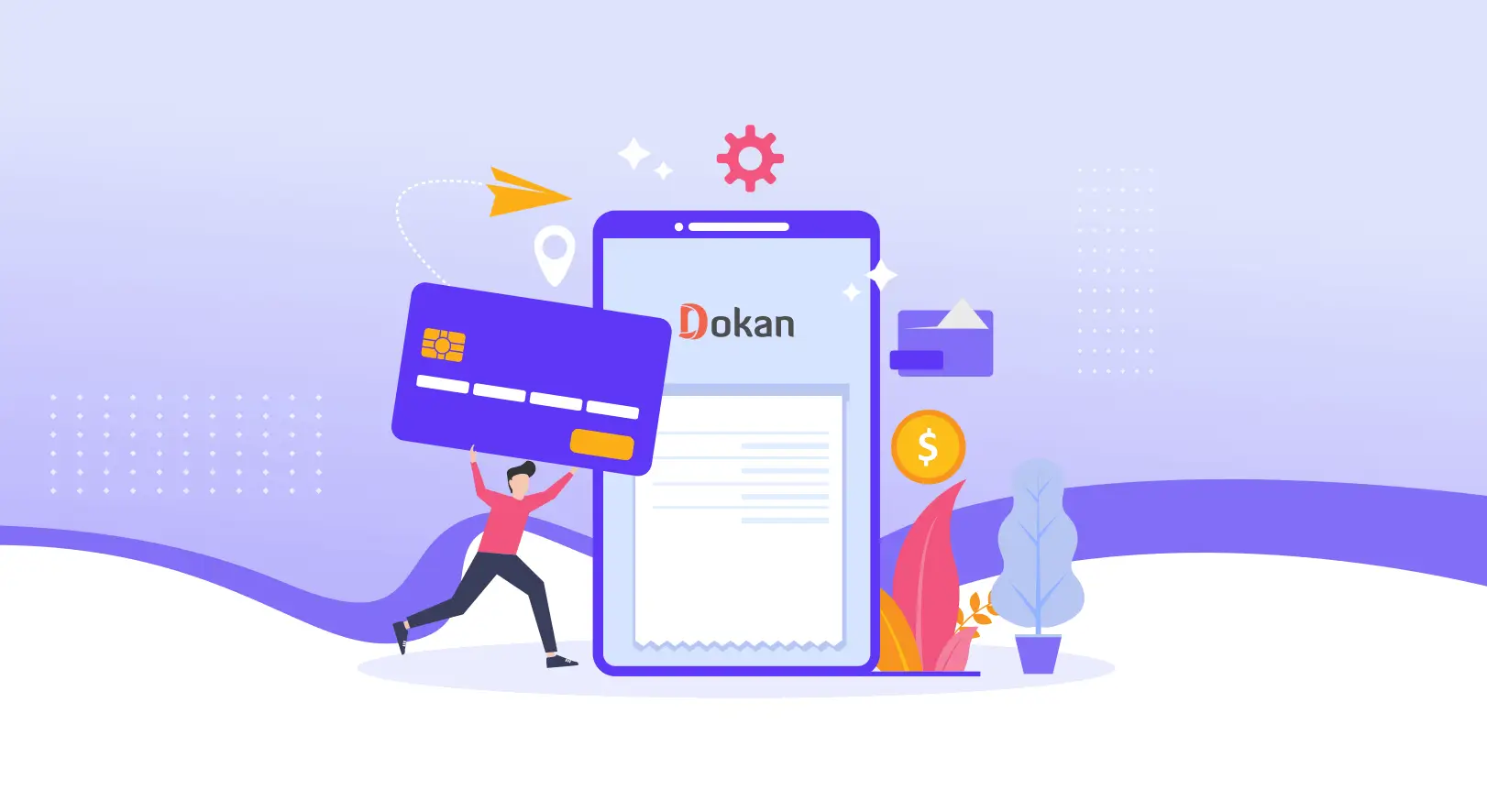
How to Increase eCommerce Conversion Rate (15 Tips)
eCommerce has become an integral part of daily living for billions of people worldwide. From buying groceries to booking online tours, countless users today depend on online shopping. This has opened up immense opportunities to countless enthusiastic online-based entrepreneurs.
As a result, thousands of eCommerce sites are launched every year. But the horrifying fact is that a significant portion of them end up with failure in a few months. A key reason behind that is most site owners don’t have a good idea of how to boost the conversion rate of their eCommerce sites.
If you are an enthusiast eCommerce entrepreneur, this blog post is for you. Here, we’ll cover in detail how to increase eCommerce conversion rates and grow more revenue. Get started!
What Is a Conversion Rate in eCommerce?
In eCommerce, the conversion rate refers to the percentage of visitors to an eCommerce site that has completed a purchase. But you can also set other metrics to count as conversion rate if you want. For example, signing up for a newsletter, filling out a form, adding products to the cart, etc.
The conversion rate is a key metric for any online-based venture. Because it provides essential insights to measure the success of any business or marketing campaign. This is why improving the conversion rate is so crucial.
What Is a Good Conversion Rate for eCommerce?
The average conversion rate in eCommerce falls anywhere between 1%-3%. It actually varies depending on the industry, buyer location, and marketing channel. Besides, the conversion rate fluctuates based on different occasions and festival times of the year.
Below, we have presented the average conversion rates of some popular industries, buyer locations, and channels.
| Industry | Location | Channel |
| Home supplies – 1.70% – 3.0% Pet products – 2.2% – 2.50% Health Equipment – 1.80% – 4.20% Electric tools – 1.30% – 2.40% Arts and crafts – 3.8% – 4.0% | UK – 4.1% USA – 2.3% Denmark – 1.80% Germany – 2.22% Italy – 0.99% | Email – 2.0% Referral – 5.0% Direct – 2.0% |
How to Increase eCommerce Conversion Rate: Effective Tips

Although your eCommerce strategies should adapt to factors like product type, industry, and yearly occasions, many universal approaches should be applied to all eCommerce sites to boost conversions. In this section, we’ll discuss all those approaches.
1. Improve Website Speed
Since eCommerce sites contain a lot of product images and clips, they usually become heavy, which causes them to load slowly. But you cannot give this excuse to Google. Because no matter what happens, Google always prioritizes the websites that are good in loading speed.
Besides, customers also love to explore those sites that load quickly. If you leave this technical issue unchecked, it can lead to frustration among customers and a high bounce rate. You can do the following things to improve site speed:
- Optimize image sizes
- Minify CSS and JavaScript
- Enable browser caching
- Utilize Content Delivery Networks (CDNs)
- Implement lazy loading
Check actionable guides on how to improve website speed.
2. Set Dynamic Pricing

Dynamic pricing refers to adjusting product prices based on ongoing market trends, occasional festivals, competitions, and supply chains. You must stay updated on how your competitors are pricing and changing their rates.
Where there is a huge supply of your products in the market and your competitors also have the one available at your hand, no way you can set high prices for them. If you can set competitive prices, surely customers will not ignore you. Next, they will want to see your product quality and shipping time.
3. Simplify the Checkout Process
A complicated and lengthy checkout process can lead to cart abandonment and lost sales. Simplifying the checkout process can remarkably improve your conversion rates. So, how to improve the eCommerce checkout process!
Consider the following approaches in this step to simplify your checkout process.
- Minimize the number of steps on the checkout page.
- Use a single-page checkout page instead of a multi-page
- Reduce unnecessary form fields from the page
- Offer multiple payment options
- Optimize the page nicely for mobile devices
4. Guest Checkout Option
The guest checkout option allows customers to buy products without having to create an account on the eCommerce site. Signing up or opening an account is sometimes a hassle for many customers, and they want to avoid it.
Many times it’s seen that a potential customer moves away to somewhere else only because he has to sign up. Because they don’t want to share their personal information. The guest checkout option is a problem solver in this case.
The guest checkout option requires the shipping, billing, payment, and address-related information only. So, you must keep a guest checkout option on your eCommerce site.
5. Optimize Landing Pages

Some common landing pages used in eCommerce are single product pages, leading generation pages, upsell/cross-sell pages, awareness pages, etc. Your eCommerce site is nothing without these pages.
So, you must consider the following issues while designing your desired eCommerce landing pages.
- Use clear and compelling headlines and persuasive copy for conversion
- Craft compelling call-to-action (CTA) sections
- Optimize the page for speed and mobile devices
- Showcase social proofs to embed trust and credibility
- Never leave any links or buttons unchecked
6. Simplify the Navigation
Simplifying the navigation means designing the website in such a way that users can easily find what they want. Create a clear and logical structure for your navigation menu. If you want to display sub-categories under multiple main categories, you should design a dropdown menu.
The navigation menu should be viewed properly on mobile devices. You may display the navigation menu anywhere but it’s better to display it on the header. You can link the important pages, social media channels, and a short version of your contact form in the footer.
Finally, there must be a search box by which users can quickly find their desired products just by typing their names. It’s recommended to place the search box on the header section.
7. Enhance the Single Product Pages
Single product pages are dedicated pages on an eCommerce site that provide detailed information about specific products. They showcase the main features, benefits, and specifications of the respective products to potential customers.
If a customer decides to buy a product, the single product page is the first thing that will convince him. This is why this page should be visually appealing, easy to navigate, and optimized for conversions. In addition, you must ensure the following elements on the page.
- Display high-quality images
- Detail product description
- Product specifications
- Clear pricing and product availability
- Customer reviews and ratings
- Add a Call-to-Action
- Recommend related products
If your site is built with WooCommerce, learn how to edit the WooCommerce product page.
8. Optimize for SEO (Local SEO)

The first requirement to increase conversions on any website is driving. You can achieve this through advertising and organically. But of these two methods, organic traffic is the most cost-effective way to do so, where there is no alternative to SEO.
SEO stands for Search Engine Optimization. It increases the organic visibility of a website by publishing content optimized with keywords. Local SEO helps receive traffic from specific geographic locations by targeting relevant local keywords.
You must consider the following aspects to improve the SEO score of your site:
- On-page optimization (meta tags, headings, URLs, and content)
- Use keywords with good search volume
- Improve site structure with a logical navigation
- Earn high-quality backlinks
- Ensure seamless user-experience
A Complete SEO guide for developers and common users.
9. Create High-Quality CTAs
A CTA (call-to-action) is a specific section designed with promotional content to encourage users to complete your desired actions. These actions could be making a purchase, signing up for a newsletter, downloading a resource, or contacting a business.
CTAs are essential for driving conversions and engagement on websites, landing pages, product pages, emails, and other marketing materials. You can place CTAs on the sidebar, floating banners, blog posts, and wherever it is suitable.
Consider the following best practices to create high-quality CTAs:
- Add compelling copies (focus on values and benefits)
- Make CTAs relevant to the content
- Use contrasting colors to make the content readable
- Use action-oriented language (‘Buy Now,’ ‘Sign Up Today,’ or ‘Download Now’)
10. Offer Multiple Payment Options

Your potential customers may be used to different payment systems. So, you should have multiple payment systems enabled on your site to target all categories of customers. If you are dependent on only one or two payment systems, chances are you will lose a lot of customers.
Below are some common payment options that are usually seen on most eCommerce websites.
- Credit and Debit Cards
- Digital Wallets
- Bank Transfers
- Cash on Delivery
- Cryptocurrency
Popular payments you can use on your eCommerce site are PayPal, Stripe, Skrill, PayU, 2Checkout, etc.
11. Offer Free Shipping and Easy Returns
Free shipping is a powerful motivating factor to attract customers and encourage them to buy your products. When customers see the shipping is free, it makes the respective product more appealing to them, eliminating the additional cost of the product. This can significantly improve the conversion rate.
Like free shipping, the easy return policy is equally important for customer satisfaction. A hassle-free return policy can build trust and confidence in customers’ psychology about the brand. This can increase the rate of repetitive purchases and word-of-mouth marketing.
12. Customer Support (Chatbots)
Customer support is crucial for any type of business, including eCommerce. It plays a vital role in ensuring customer satisfaction. Since in eCommerce, customers can’t check and experience the product directly going to the physical store, they depend heavily on the customer support team.
You can provide customer support through various channels like live chat, email, phone support, and social media platforms. Once you have a support team, not only can you render customers information, but also you can collect valuable feedback from them.

13. Customer Retention Programs
Customer retention programs can foster long-term relationships, increasing loyalty and driving repetitive purchases. Without retaining customers, you cannot grow your business in the long run. Based on your business and products, you have to adopt suitable customer retention strategies.
But some common customer retention strategies followed in most businesses are:
- Give a wonderful onboarding experience
- Provide a personalized buying experience
- Offer unique services
- Offer discounts on recurring purchases
- Keep them engaged with email marketing and gamification
You may explore this post on powerful membership retention strategies to get more detailed ideas on this topic.
14. Leverage Email Marketing
Email marketing is the most effective medium among all the digital marketing channels. According to numerous researches, the ROI from email marketing is 4200%. This means you can generate $42 in revenue from $1 invested in email marketing.
You can generate this amount of revenue only when you are able to craft fool-proof email marketing strategies. Besides, you need an email marketing tool as well to run the email marketing campaigns. Here is a detailed post on how to get started with email marketing.
Hope you will have a nice idea about email marketing from the post.
15. Utilize Scarcity and Urgency
By showcasing scarcity and urgency, you can push customers to buy their desired products sooner before it’s too late. This approach is followed by almost every website online. This approach highlights limited quantities of particular products, showcasing to customers they are in limited stock.
Another way of creating urgency is offering limited-time coupons, promo codes, and discounts. You can also leverage special festivals, occasions, and holiday seasons to display limited-time offers. All of these can create a sense of urgency in customers.
However, when implementing this approach, make sure you are transparent and genuine about your products and offers so customers don’t get scammed. This is crucial for upholding your brand value.
How to Convert More When You’re Selling WordPress Products
You can showcase how to sell with Appsero – a short section will be enough. Follow the links below for reference and help.
- https://appsero.com/wordpress/plugins/how-to-sell-wordpress-plugins/
- https://appsero.com/wordpress/plugins/how-to-sell-plugin-in-wordpress-giude-for-developers/
- https://appsero.com/product-updates/skyrocket-growth-with-appsero-wordpress-plugin-manager/
FAQ on How to Increase eCommerce Conversion Rate

Hope you are enjoying this discussion. In this section, we’ll answer some of the most frequently asked questions related to today’s topic.
What are the best eCommerce platforms?
WooCommerce, Shopify, Wix, BigCommerce, and Squarespace.
What Is the Average Conversion Rate for eCommerce?
Anywhere between 1%-3% is the average conversion rate for eCommerce.
Which one should I prioritize between organic and paid marketing?
If you have a good amount of investment, you can go for paid marketing from the beginning. But if you have a limited budget, you may adopt the organic/SEO marketing approach at the beginning.
Conclusion
Increasing the eCommerce conversion rate requires a strategic and holistic approach. By implementing all the above approaches, you can make a visible and measurable difference in your eCommerce business. Apart from this, you must remember that every eCommerce business is unique.
So, the combination of these approaches may result differently based on industries. And, you must experiment to find out which approach is best for your site. Plus, you have to change your strategies over time. Feel free to reach us through the comment section if you need any suggestions from us.
Subscribe To Our Newsletter
Don’t miss any updates of our new templates and extensions
and all the astonishing offers we bring for you.




